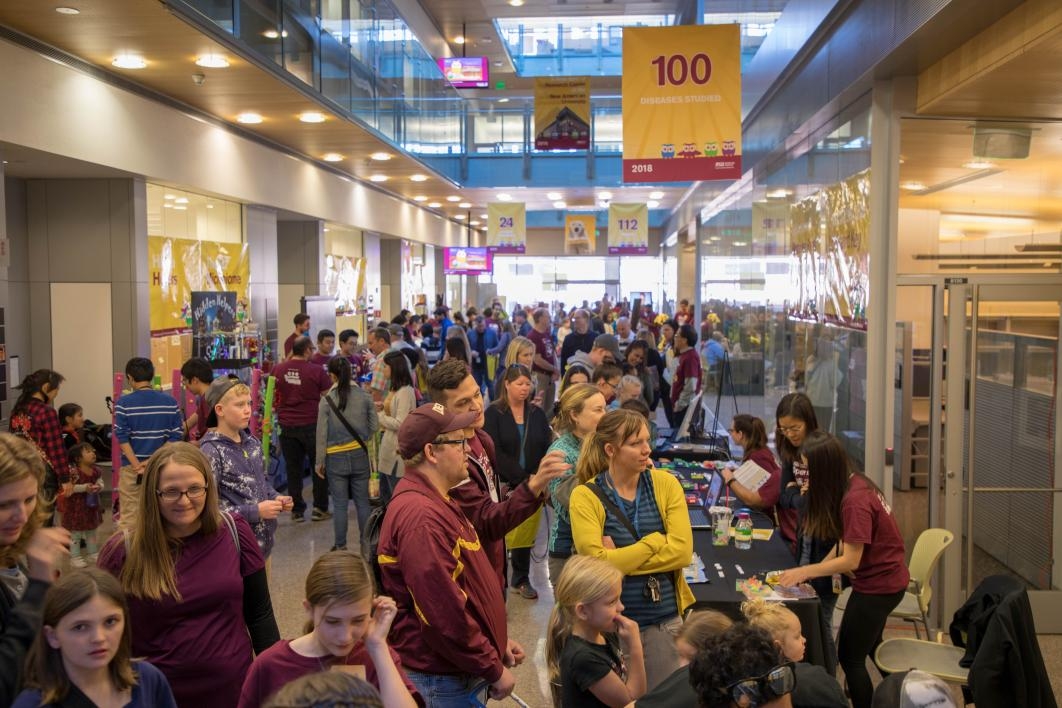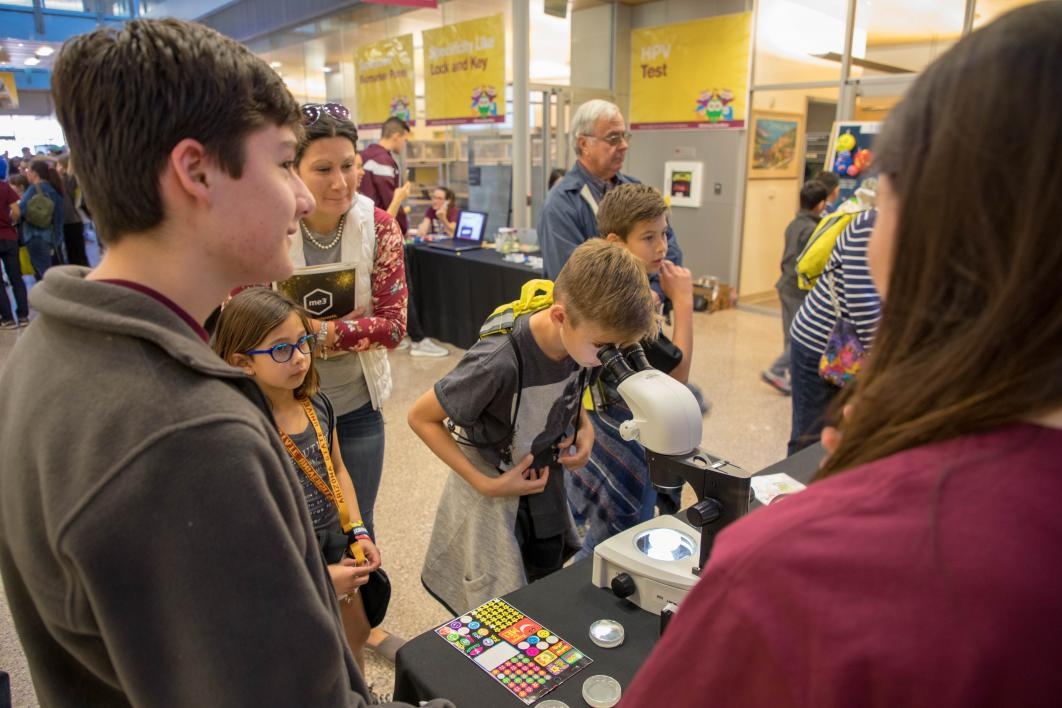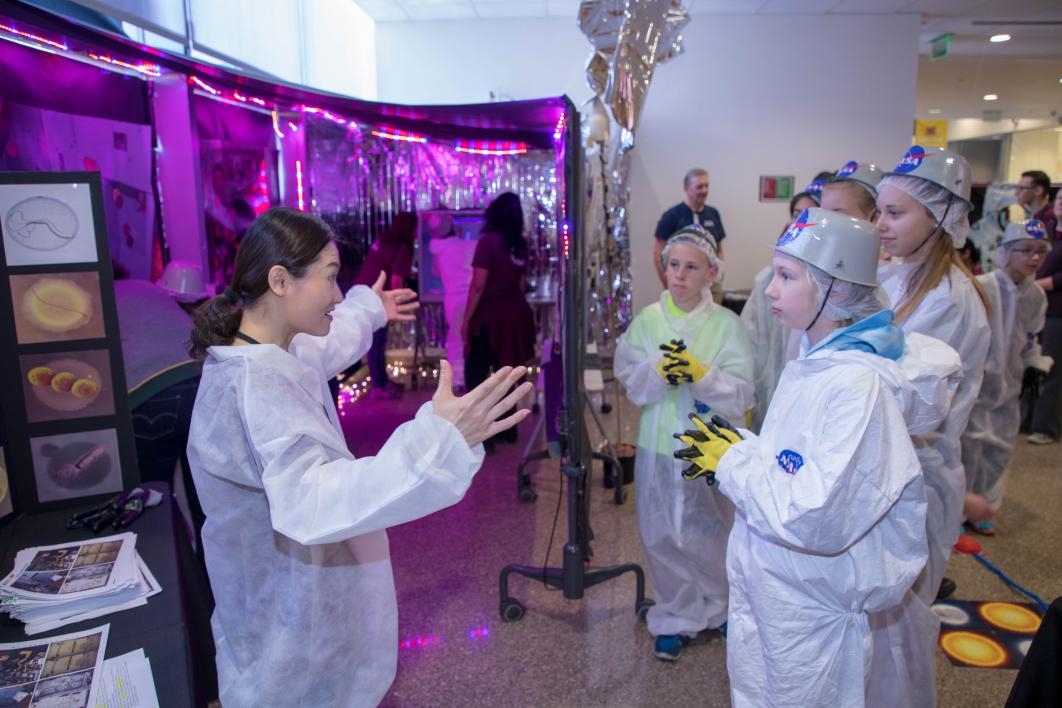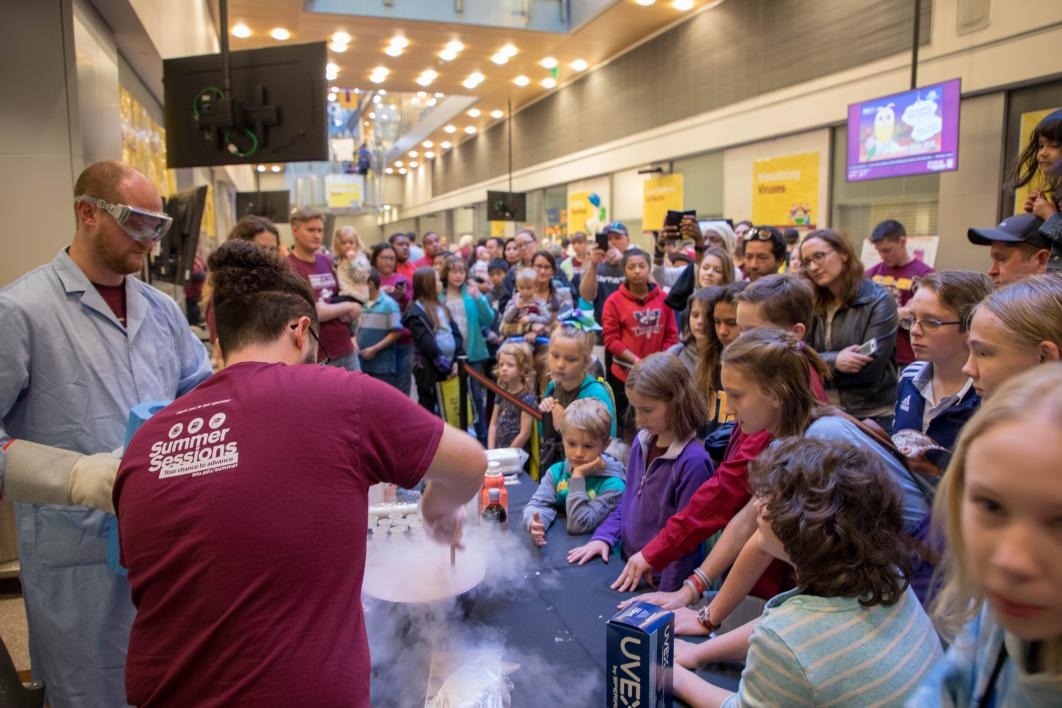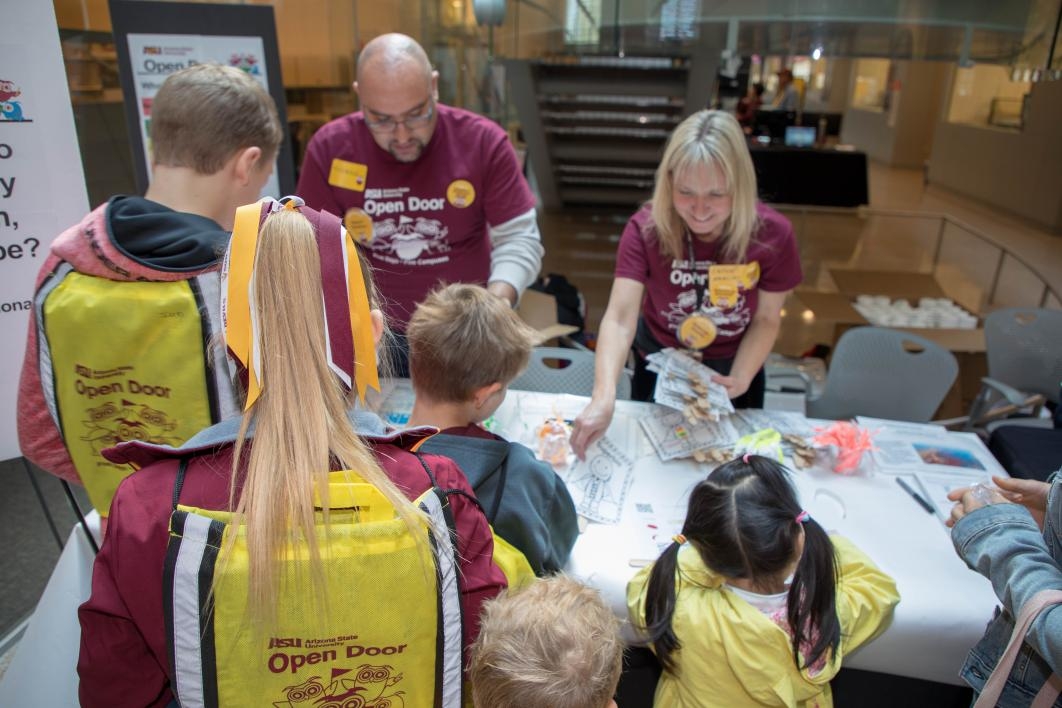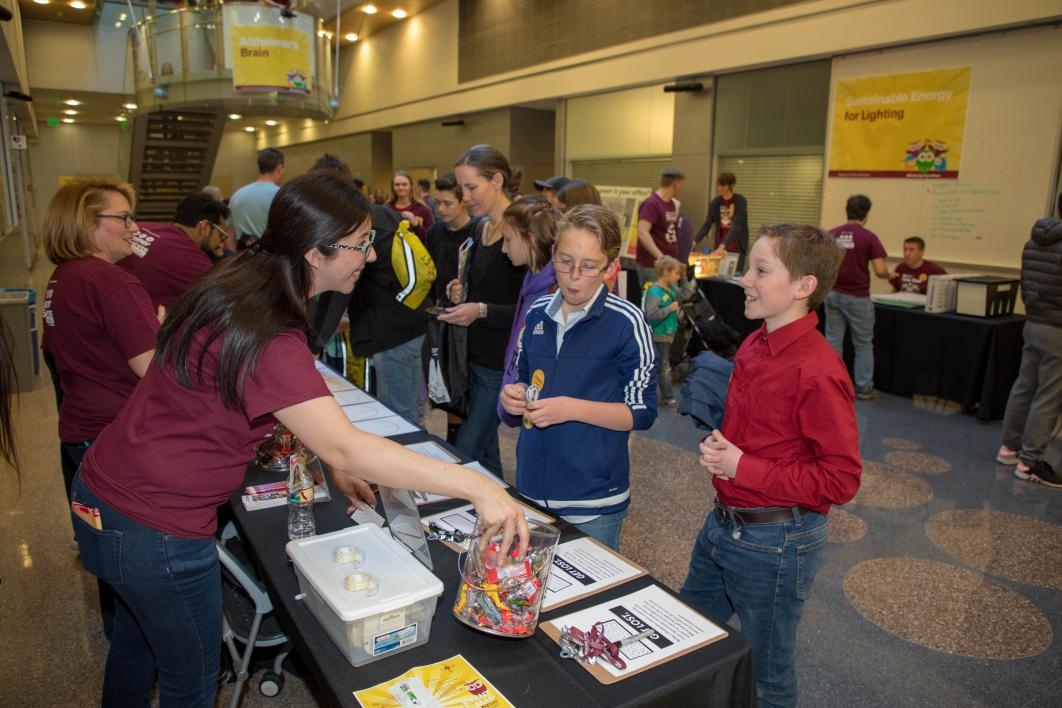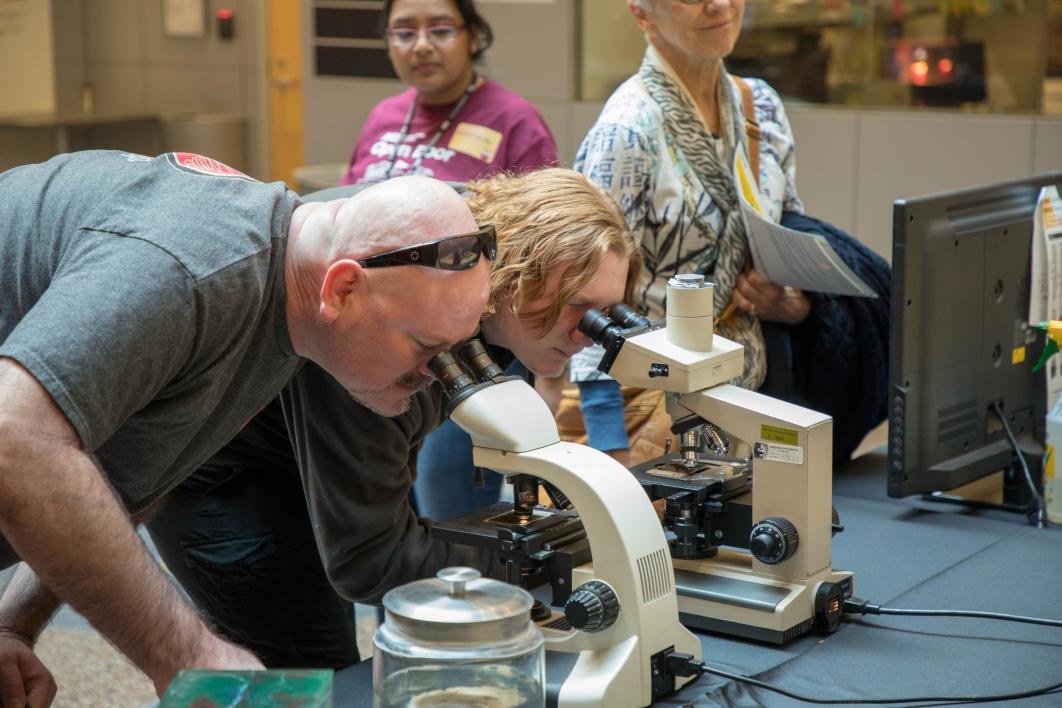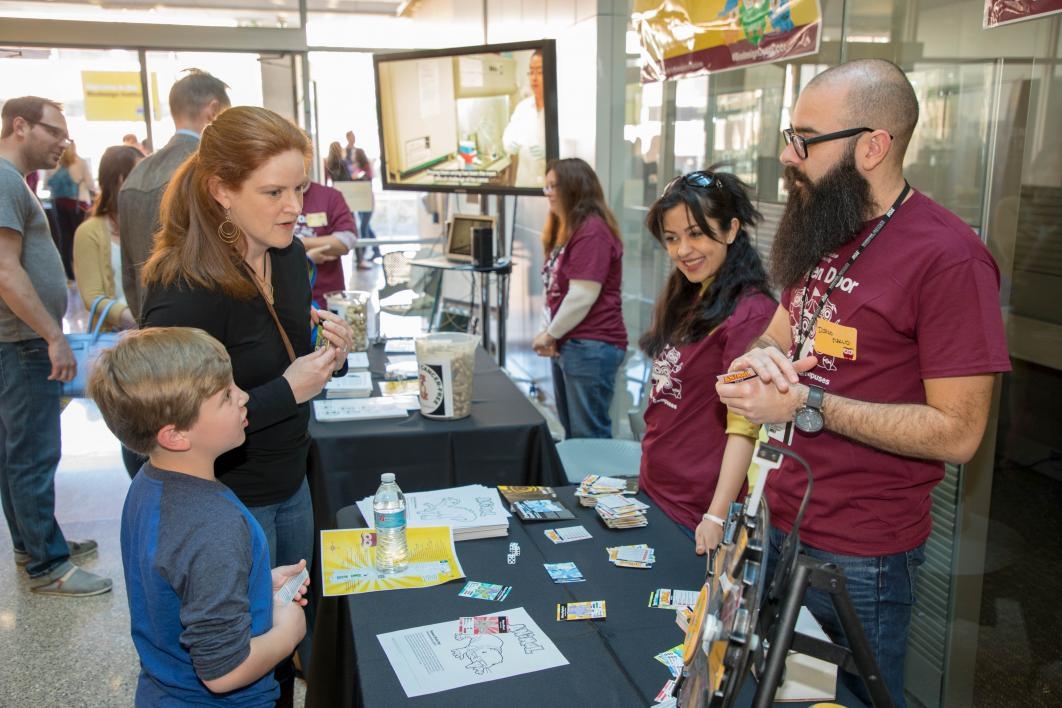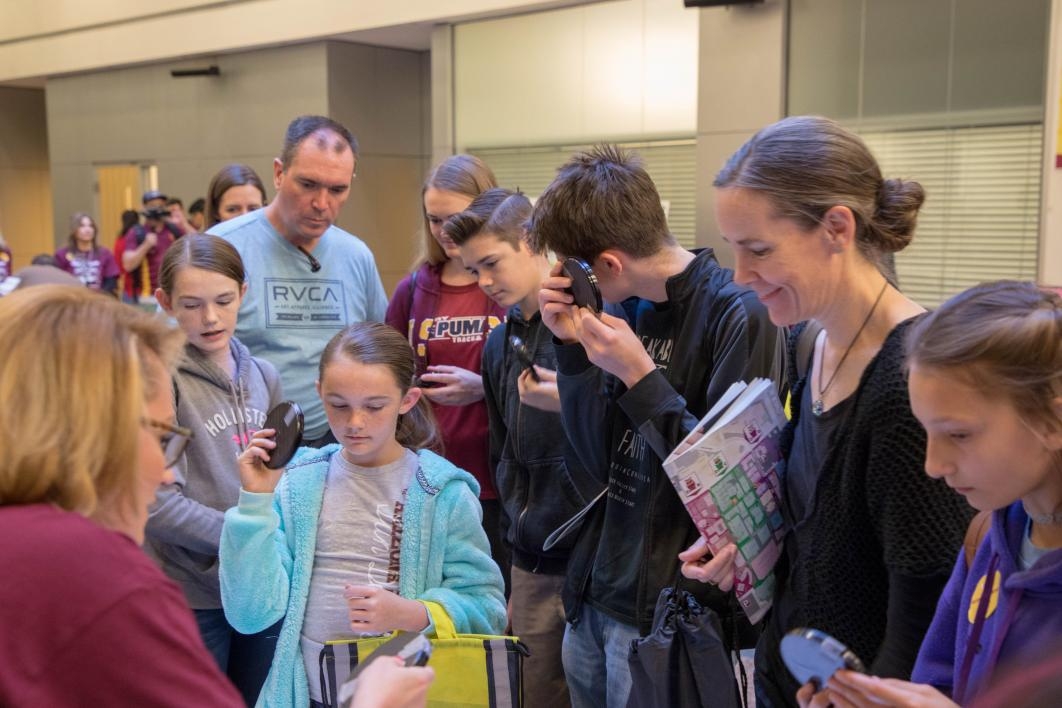ASU's Biodesign Institute hosts thousands of visitors for Open Door 2018
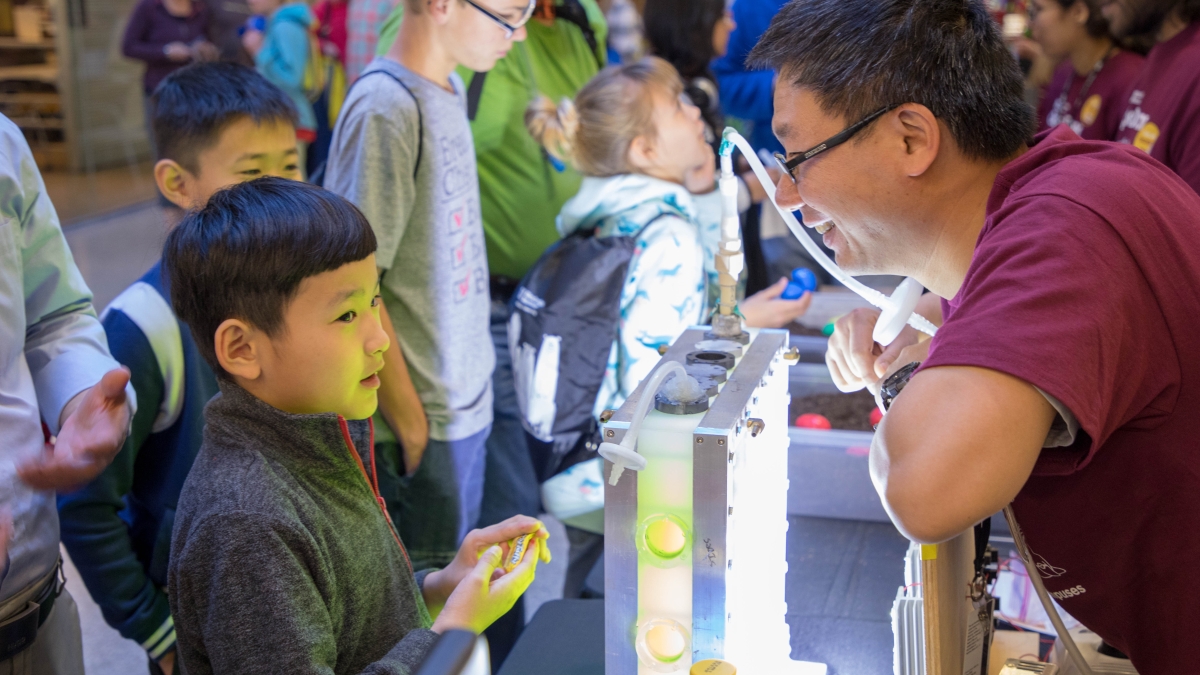
Open Door is a special opportunity for the public to interact with Biodesign scientists and explore the Biodesign buildings. Photo by Ben Petersen
More than 2,600 people walked the halls of Arizona State University’s Biodesign Institute on Saturday during the annual ASU Open Door event. Kids of all ages and their families enjoyed nearly 40 science exhibits and activities organized by 16 research centers at Biodesign.
Guests had the chance to take a selfie and watch their face evolve with computer software, put on a spacesuit and do a microbiology experiment on the International Space Station, see how treatments to fight Ebola are made in plants and more.
It was an exciting opportunity for Biodesign researchers to share their science with the community and inspire kids to pursue STEM careers. Open Door is Arizona State University's annual open house and Biodesign’s largest outreach event. Planning for this year’s showcase began last year, and 340 volunteers helped to engage visitors.
“It takes many hard-working team members to host Open Door here because we have a wide breadth of research happening here,” said Julie Kurth, manager of Biodesign marketing and communications and chair of this year’s planning committee. “Sharing our love of science with these curious visitors helps to prepare a new generation to take over from us and builds the community support we need to make innovations that can better our world.”
Scientists lined the open atrium of the interconnected Biodesign buildings stretching the length of nearly two football fields. Faculty and student volunteers wore custom stickers indicating their occupation. Visitors got to meet different kinds of biologists, chemists, engineers and even an FBI agent.
Esther Cheng, an undergraduate researcher at the Biodesign Center for Immunotherapy, Vaccines and Virotherapy, volunteered at the event.
“What I like about Open Door is that we’re able to be open and express our joy and passion for research to the community,” Cheng said. “I think it’s great to raise awareness and support for what we do.”
Brenda Hogue said she loves hosting Open Door every year. Hogue is a professor at both the Biodesign Center for Applied Structural Discovery and the Center for Immunotherapy, Vaccines and Virotherapy.
“It’s such a great outreach for the scientific community,” Hogue said. “It’s fun to see kids get excited about the science. I even had one little kid in fifth grade, and he wanted to know if he could work in my lab.”
Biodesign’s Marco Mangone, an assistant professor at the Virginia G. Piper Center for Personalized Diagnostics, showed off some of his lab equipment.
“Our booth is trying to hook up kids with genetics and show them the power of genetics,” he said. “We show them mutants in the microscope, and kids are really excited about looking for mutants and worms that change color and shape during development.”
Open Door began in 2012 as a collaboration between the Biodesign Institute, the College of Liberal Arts and Sciences and the Ira A. Fulton Schools of Engineering. Today, Open Door is the university’s signature outreach event, giving the public a behind-the-scenes look at what makes ASU No. 1 in the U.S. for innovation.
“I just love the kids’ enthusiasm for the science we show them. I want to inspire these kids to be the next generation of scientists,” said volunteer Collin Jugler, a PhD student in Molecular and Cellular Biology at ASU and a researcher at Biodesign.
More Science and technology
Extreme HGTV: Students to learn how to design habitats for living, working in space
Architecture students at Arizona State University already learn how to design spaces for many kinds of environments, and now they…
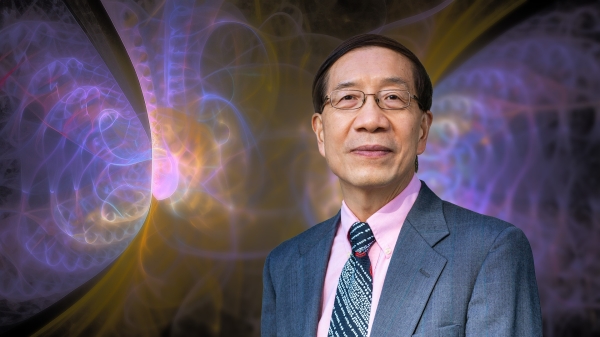
Human brains teach AI new skills
Artificial intelligence, or AI, is rapidly advancing, but it hasn’t yet outpaced human intelligence. Our brains’ capacity for…
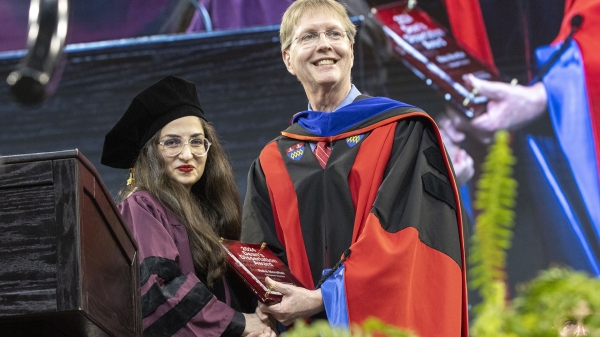
Doctoral students cruise into roles as computer engineering innovators
Raha Moraffah is grateful for her experiences as a doctoral student in the School of Computing and Augmented Intelligence, part…
